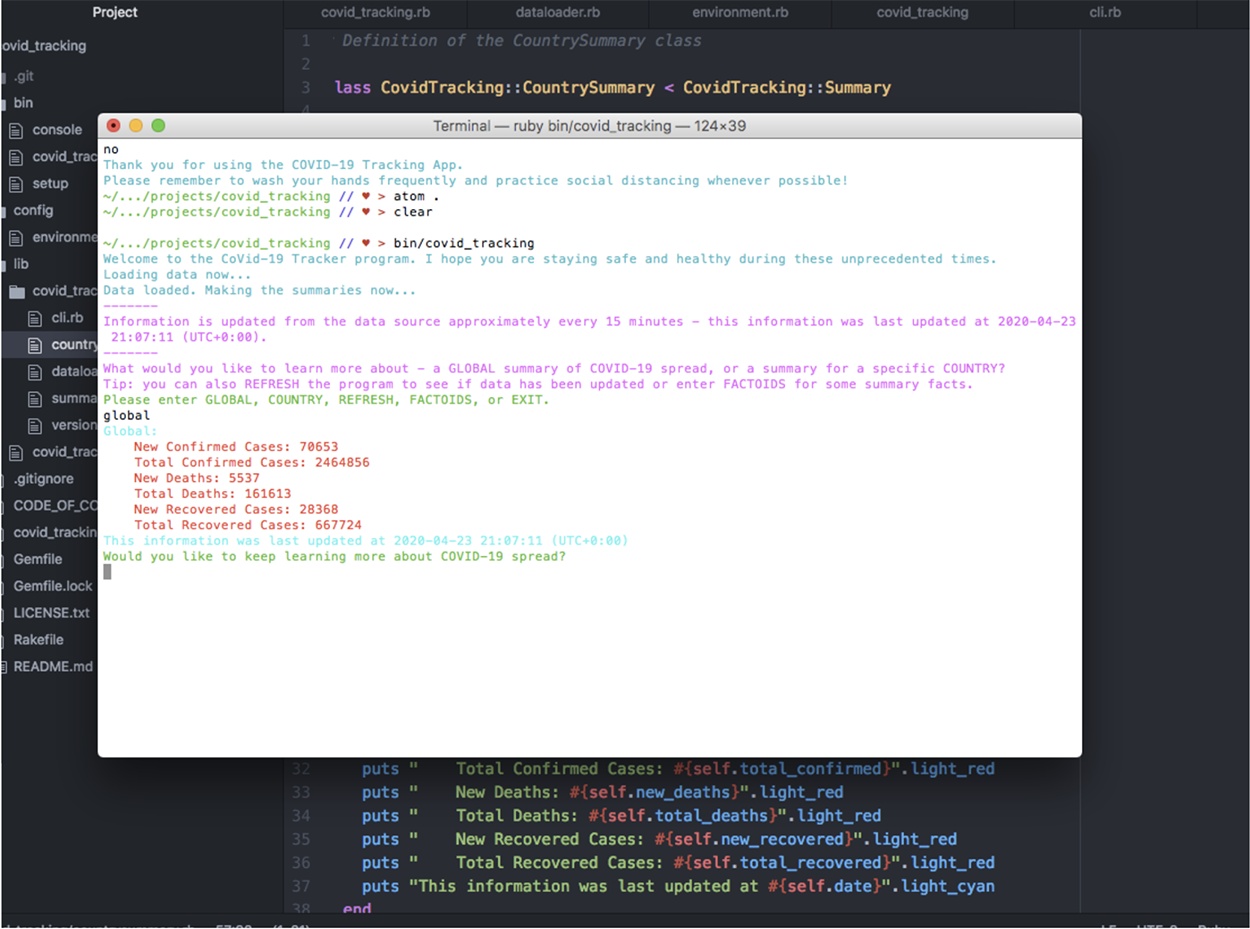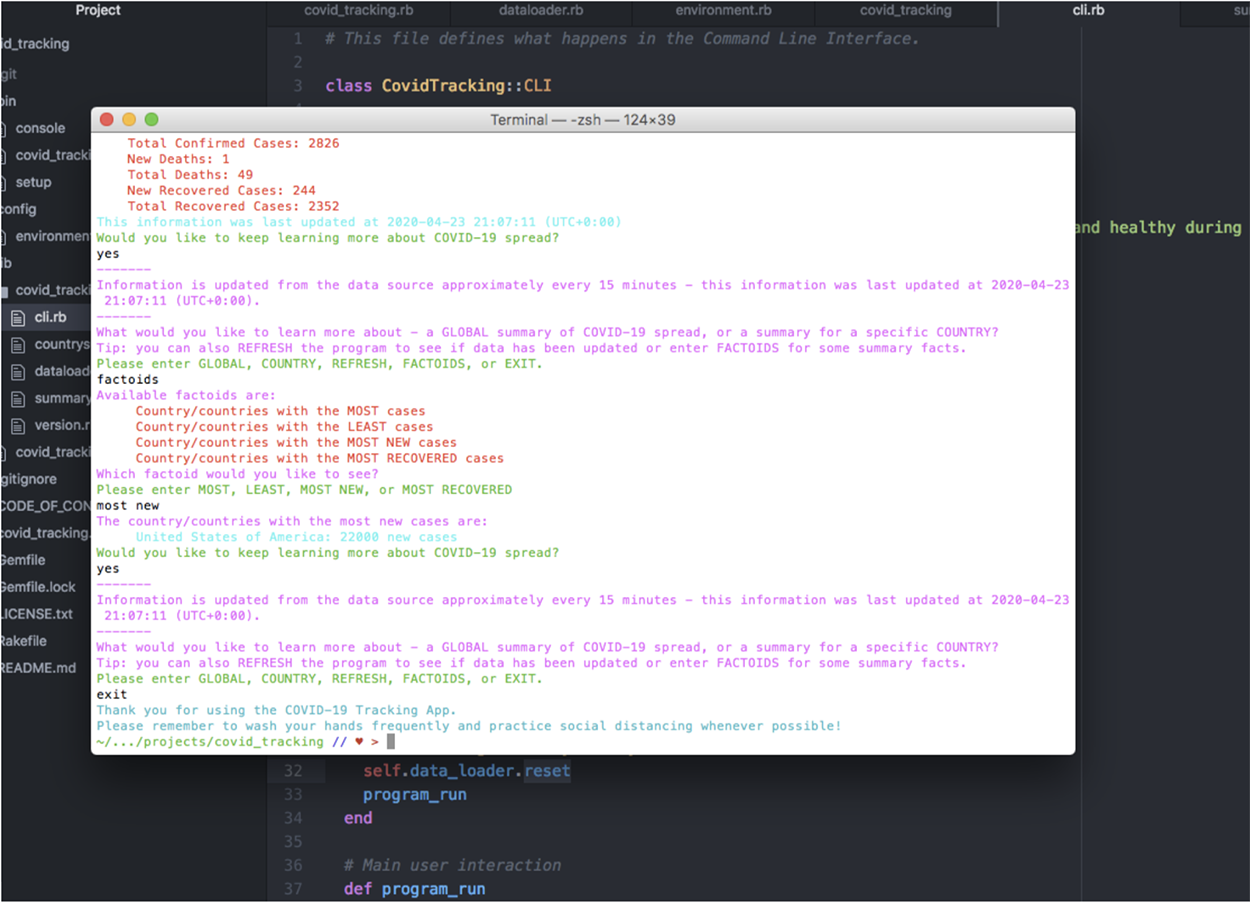Flatiron School Students are Using their Skills to Address Problems in the Wake of the Coronavirus
Embracing their newfound ability to make the world a better place through technology, our students used their projects as an opportunity to solve problems in the wake of COVID-19.
While we continue to live under unprecedented times during the COVID-19 pandemic, we’ve watched our students find inspiration in using their data science and coding skills to navigate this new, temporary normal.
Embracing their newfound ability to make the world a better place through technology, our students have used their Flatiron School projects as an opportunity to solve and address problems in the wake of COVID-19. These students, as they’ve learned to code over the past few weeks and months, share their COVID-19 projects below. Working towards building community and clarity, Joel and Jay share how learning how to code informs the ability to make the world a better place.
Student Projects
Joel K., Self-Paced Online Software Engineering
In Flatiron School’s Online Software Engineering, the first major milestone is completion of your CLI Project, also known as command-line interface.
For his first project, Joel, one of our online software engineering students, wanted to build something useful in a time of unprecedented uncertainty. By using his CLI project to practice “becoming an engineer that builds solutions for making the world a better place,” Joel landed on coding a COVID-19 tracking app, pooling together high-level statistics about the pandemic, organized by individual countries. Within his app, he brings together information from across the world into once place, making highly-sought after information accessible and easily digestible.

To build his COVID-19 tracking app, Joel found an API on Postman, which also included ample amounts of information about how to return responses within his code. He wrote a few lines of code, waited to see if it would work, and if it didn’t, kept trying until the app worked smoothly. Now, Joel’s CLI project quickly and effectively pulls information, including total cases reported, total cases recovered, and much more.
The hardest part? “Parsing the response from the API,” he recalls. After he mastered that, he then went on to build a custom exit message, reading "Thank you for using the COVID-19 Tracking App. Please remember to wash your hands frequently and practice social distancing whenever possible!"

As a next step, he looks forward to “people collaborating around his project in order to take it forward.” Additionally, he’s working through publishing it on RubyGems.org.
Find Joel on LinkedIn here or on Twitter @joel_kelly77.
Check out his CLI Project here.
Jay W., New York City Software Engineering
For her final project, The Good Space, Jay was inspired by building community around the coronavirus pandemic. Specifically, she sought to create a space for sharing information in order to benefit members of local communities and to provide a platform that facilitates offering or reaching out for help. She also found inspiration for her app from Craigslist.

On the app, you can browse through various community postings, formatted with descriptions and locations, using Google Maps. For example, users can post about offering grocery delivery services to the elderly, sharing where they’re located and where they’re able to deliver. A user can then select to reply to the post and inquire further. The app will call up Gmail, pre-populating the poster’s email address and post title for the requester. As a poster, users can edit and delete their posts.

For the back-end, Jay used Ruby on Rails. For the front-end she used ReactJS and, for her styling, React Bootstrap and Flexbox. For her API, she leveraged Google Map’s React API.
Find Jay on LinkedIn here.
Check out more about The Good Space here.
Disclaimer: The information in this blog is current as of May 18, 2020. Current policies, offerings, procedures, and programs may differ.



